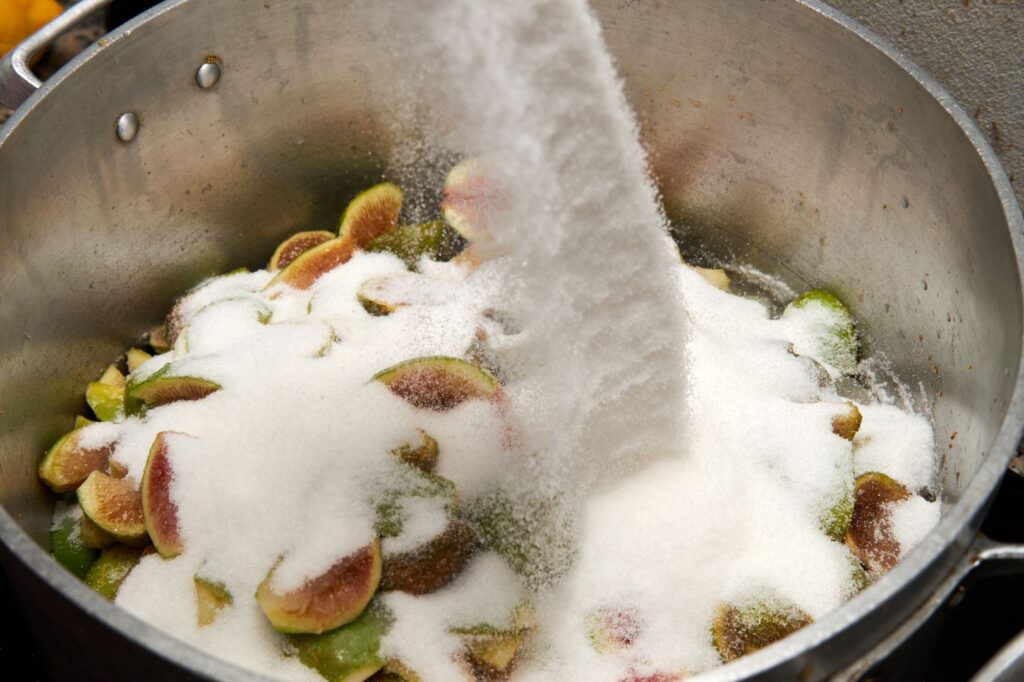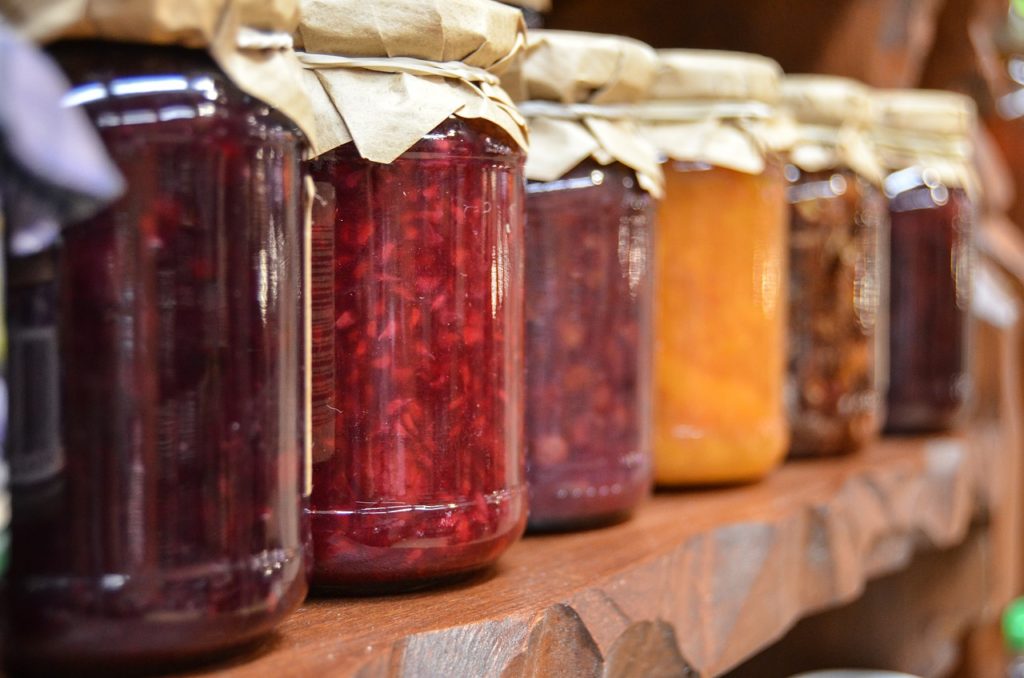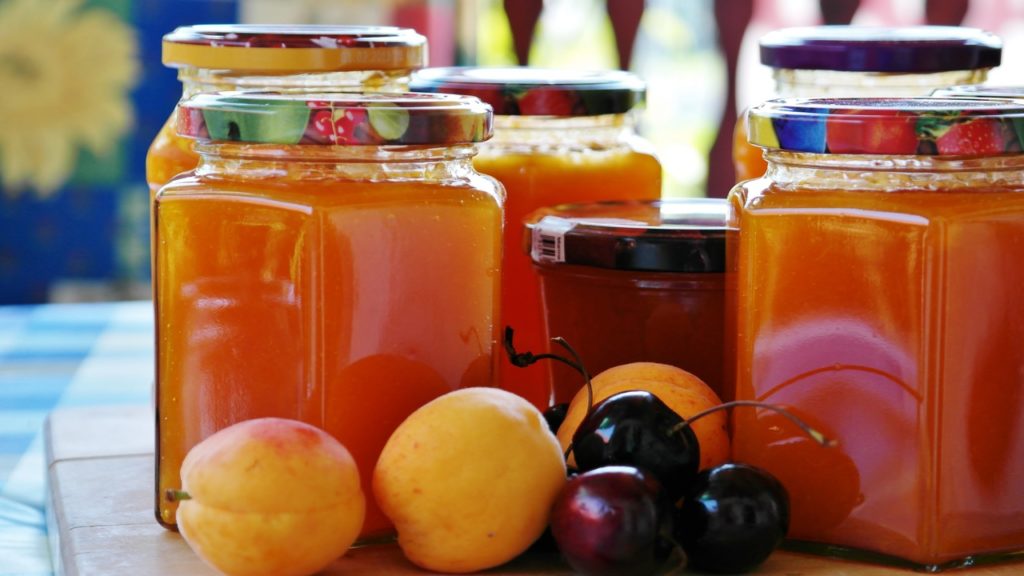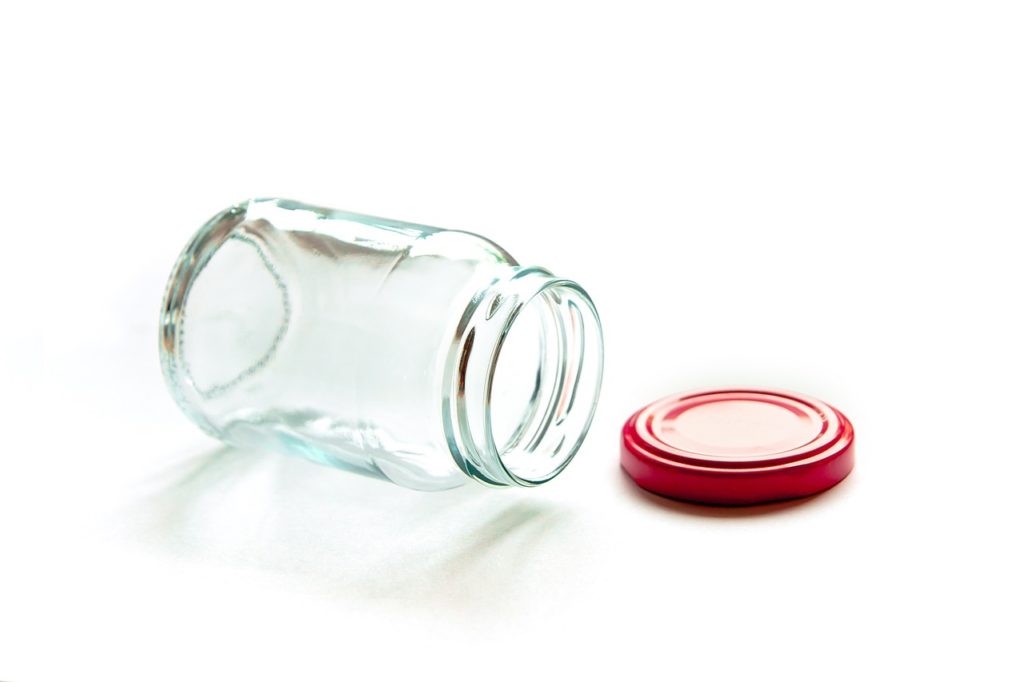Probably the number one question I hear about jams and jellies is the sugar content. The amount of sugar in jams and jellies might seem excessive to some.
Can you reduce sugar in a jam? The answer is … maybe but not to expect the same results.
Sugar plays a really important role in preserving and while we can reduce it we cannot necessarily eliminate sugar and make a shelf-stable preserve.
Table of Contents
The Amount Of Sugar In Jam
A typical serving size of jam or jelly is 2 tablespoons, which contains around 16 grams of sugar. Here’s how that compares to other foods:
- An average apple contains about 15 grams of sugar. So a 2 tablespoon serving of jam has about the same amount of sugar as a medium-sized apple.
- A can of regular fizzy drink contains around 32 – 39 grams of sugar. A serving of jam has about 40% less sugar than a can of fizzy drink.
- A 45g chocolate bar (small) typically has around 22-26 grams of sugar. Jam has around 35-45% less sugar than a chocolate bar of similar weight.
- A single glazed doughnut can contain up to 30 grams of sugar. A serving of jam has around 45% less sugar than a single doughnut.
In summary, while a serving of jam does contain a significant amount of sugar (around 16 grams), it is comparable to – and often has less sugar than – other common “sweet” foods like fruit, soda, chocolate and doughnuts. The high sugar content in jam allows it to be set and preserved properly, but in moderate portions, it is not significantly higher in sugar than many other treats.
Why Is There Sugar In Jam?
The amount of sugar used to make jam is necessary for a few reasons.
Sugar is a preservative, it stops microorganisms from spoiling the jam and makes it a shelf-stable product that when canned, can be stored at ambient temperature for a year or more.
It activates the pectin in the fruit being preserved. Without sugar and acid, we don’t have a gel and this is what gives jam the spreadable texture we know. If you reduce or omit sugar entirely you may end up with a runny fruit puree.
Lastly, it enhances the flavour and colour of the fruit. Just like salt, sugar boosts flavour and will turn your fruit preserves into flavour-packed treats.
In summary, sugar plays a critical role in allowing the jam to set properly, last longer on the shelf, and develop the characteristic texture, flavour and colour that we expect from a jam. While reducing the sugar is possible, it requires techniques like using pectin or gelatin to compensate for the effects of less sugar.
Can You Decrease The Amount Of Sugar In Jam & Jelly?
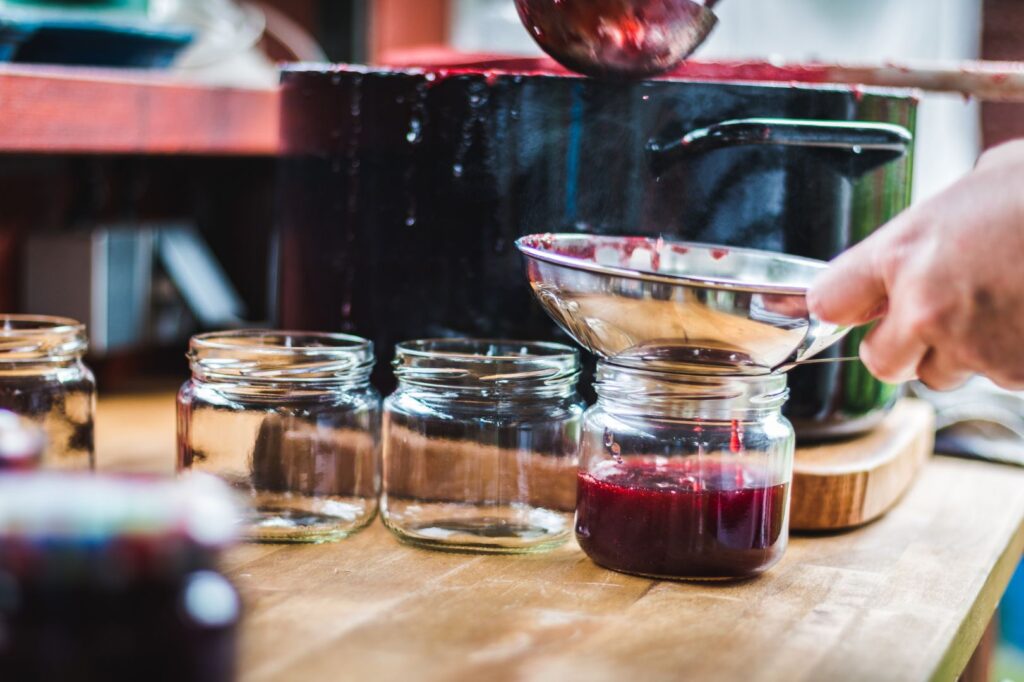
The truth is most relatively modern recipes for jam are already fairly low in sugar, particularly in comparison to store-bought jams and jellies.
Commercial jam makers use more sugar because it is cheaper than fruit. They can bulk out their jam with relatively cheap sugar and reduce fruit to make savings and therefore better profit margins.
Recipes for homemade jam usually use enough sugar to get a good gel and make sure the jam sets. This is paired with the need to create a jam that can be canned and preserved without spoiling.
When you reduce the amount of sugar you will typically find that jam doesn’t set well even in high pectin fruits like apples and citrus.
To combat this you may need to add extra ingredients such as commercial pectin or in really reduced sugar jams gelatine.
Using Pectin To Set Low Sugar Jams
If you really want to reduce the amount of sugar in your jam you will need to use a setting agent like pectin.
Pectin is a natural thickening agent found naturally in fruits that helps jam set properly.
Commercial pectin products like Pomona’s Universal Pectin can help you reduce the amount of sugar in your jam while still achieving a good gel.

Pomona’s pectin allows you to make jam with roughly 20-30% less sugar compared to a traditional recipe. This is because the added pectin helps compensate for the loss of thickening and gelling power by reducing the sugar content.
To use Pomona’s pectin to reduce sugar:
- Measure the fruit and calculate the amount of sugar you want to use, aiming for 20-30% less than a standard recipe.
- For each 1 cup of fruit, bloom 1 tablespoon of Pomona’s pectin in 1 tablespoon of water or juice from the fruit. Let it sit for 1 minute.
- Heat the fruit and calculated the amount of sugar until the sugar dissolves and the fruit is tender.
- Remove from the heat and stir in the bloomed pectin. Return to the heat and bring to a full rolling boil that cannot be stirred down.
- Boil for 1 minute, stirring constantly. Remove from the heat.
- Allow the jam to cool slightly before using or canning as normal.
The added pectin will help the jam set firmly with the reduced amount of sugar. You can gradually reduce the sugar further with each batch to determine the minimum needed for your preferred consistency. Using pectin is an effective way to cut back on sugar while still producing spreadable jam.
I would recommend following the instructions or recipes from the pectin manufacturer. This is the only surefire way to get a result that will work every time. I believe Pomona even sell a book of jam recipes that use their commercial pectin.
